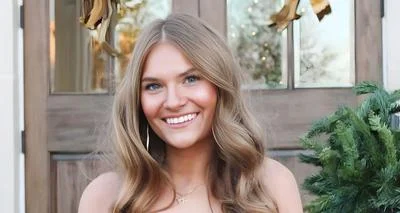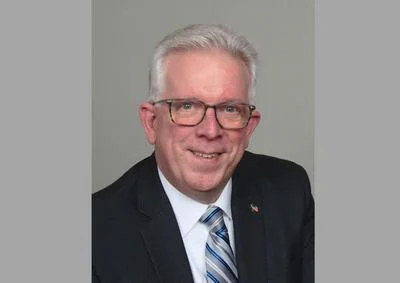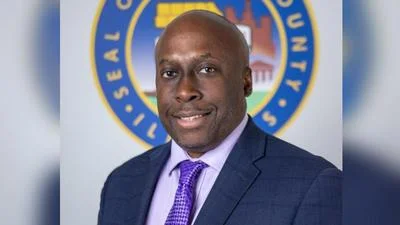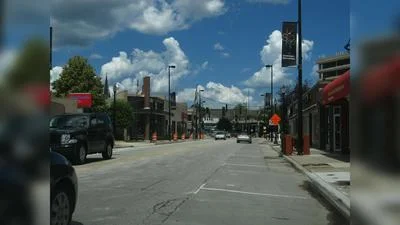Village of Bartlett Village Board met Feb. 4.
Here is the minutes provided by the board:
President Wallace called the Committee of the Whole meeting to order at 7:11 p.m.
PRESENT: Chairmen Camerer, Carbonaro, Deyne, Gabrenya, Hopkins, Reinke, President Wallace
ABSENT : None
ALSO PRESENT: Village Administrator Paula Schumacher, Assistant Village Administrator Scott Skrycki, Management Analyst Joey Dienberg, Finance Director Todd Dowden, Director of Public Works Dan Dinges, Public Works Engineer Bob Allen, Building Director Brian Goralski, Golf Professional Phil Lenz, Police Chief Patrick Ullrich, Deputy Chief Jim Durbin, Village Attorney Bryan Mraz and Village Clerk Lorna Giless.
POLICE & HEALTH, CHAIRMAN CARBONARO Traffic Calming Policy request
Deputy Chief Jim Durbin stated that before you is a proposal to enact a neighborhood traffic calming policy. One of the biggest complaints the police department receives are neighborhood traffic concerns. Often the residents ask about lowering speed limits, adding a speed bump or a stop sign. Traffic calming is the application of traffic engineering designed to control traffic speeds, adjust traffic volumes, encourage driving behavior appropriate to the environment and doing so without creating new traffic problems in the process. Based on a recent experience that was cited in the proposal (North and Western), where very vocal residents attended village board meetings to talk about a handful of issues related to stop sign violations, speeding autos and increased traffic to name a few. The village board was very attentive to those residents needs, going as far as paying for and installing flashing LED stop signs at the intersection. At the time, it seemed that all parties were happy about the solution, but the police still received many complaints about high volumes of traffic in the area. The police department then performed a typical response, listened to the residents, observe if there is a problem, conduct traffic studies, etc. Speed trailers will then be deployed or unmanned drone cars in the area to help alleviate that problem. The police will also conduct traffic enforcement and officers were seen out there often. As the problem persisted, staff looked at speed tables and bumps and conducted a neighborhood meeting with the residents to get their feedback. 27 residents from the area showed up and voiced their concerns and each one of them was concerned about something else and had a separate resolution to the problem. Some wanted speed bumps and some did not. Some thought the police presence was too great and the flashing lights and engine noises of the police cars was an annoyance.
This led staff to take a look at what they do internally and how to avoid repeating this process. All of the Villages internal records show the problem started as early as May 2018 and continued through the meeting held on August 2019. What the police department thought was a great idea, the flashing LED stop signs, turned out to be hated by many of the residents who attended the neighborhood meeting. Staff conducted surveys to see who has speed bumps in their towns and see what other towns have for a traffic calming police. The policy that was put together is more cohesive and stimulates the neighbors to have conversations with each other so they can have a more cohesive approach to dealing with what they perceive the traffic related problems are in their neighborhood. It will help the police focus their efforts in one direction and create a process to where there are several checks and balances where the fire protection district and public works would be contacted and discussed with. That way they can make a more informed recommendation to the Board before a decision is made.
Chairman Camerer thought it was a good idea to have the residents involved. When it initially came about, it was his understanding the flashing sign was something the residents wanted and when the stop sign didn’t work, then he was pushing for the next stage which would have been the traffic islands. At that point the residents wrote to him saying they didn’t like what was being done, even though he was just doing what he thought they needed and wanted. Although getting residents involved with likely slow the process down a little, he thought it was a great idea. He further asked how police know if the flashing stop sign is actually working since there is no objective way to evaluate it. He asked if we just leave it up cause its up. If residents don’t actually like the signs and it is not working he thought it should not be there.
Deputy Chief Durbin stated that he can’t answer that question statistically, but the amount of complaints the department has received since making all of these changes and having the listening session have really tailed off and he believes they have only had one complaint since August. They haven’t had a request for extra patrols either. Our officers do spot check things like this from time to time and the data doesn’t support one way or another the effectiveness of the signs.
Chairman Deyne stated that he lives in that area and has received a number of complaints about the flashing stop sings. They have diminished lately, but he believes it’s because people have expressed their concerns and that there isn’t more that can be done so they just learn to live with it. There has been people that have told him you can see the stop sign all the way from Devon Ave. The other night, he was turning off of Lake St. on to North Ave. and he didn’t realize it at first, but he could see the sign all the way from back there. He thought it would be good to look into seeing if it has helped or not and maybe put a conventional stop sign back in.
Village Administrator Paula Schumacher asked Mr. Durbin to explain how the policy discusses the removal of items like the flashing stop sign.
Deputy Chief Durbin stated that part of the process would be a petition in which 66% of the impacted area would have to be on board to pursue a traffic calming measure after it has cleared certain hurdles with the police. Additionally, according to the way it was written, we would have to give it a 12-month trial run and examine whether its affective, still wanted or still warranted.
Chairman Deyne stated that it’s a good point to have cause a number of people have told him they don’t like it, but he doesn’t know if that’s the feeling of the overall neighborhood.
Deputy Chief Durbin stated that a provision in it would be that a majority of the residents would need to be onboard with the removal process as well.
Chairman Deyne stated he could see people tell us they want the signs back once they are removed.
Chief Patrick Ullrich, stated that’s why its good to put it in a policy to not only get something installed, but also removed. The village will be spending money on these things, so we want to make sure there is a period of time where its installed and we can see how effective it is and if they want something removed, review it and make sure they are not effective. Not everyone is going to be in favor of having them installed or removed, which is why there is a petition process and they need a certain percentage of the neighborhood that either wants to have it installed or once its installed, wants to have it removed. Specifically, to your question about the stop signs, the reason they went in was because we were receiving tons of complaints about vehicles not stopping at the stop sign, after we had put out unmanned cars, after we did stop sign enforcement there and we continued to get complaints. Most of the issue came from construction happening on Rt. 59 and construction on Lake St. and everyone’s GPS’s were rerouting them through the area. He thought they should do another traffic study and see if the volumes have decreased and see if people are still rolling the stop signs. He thought that everything they did, worked, along with traffic counts probably being down. The police also worked with the Villages traffic consultant and took a look at the timing of the downtown traffic lights and determined that they could make some changes to those which seems to have improved the flow through downtown. They will take a look at the signs and if it makes sense to remove them, they will.
Chairman Camerer asked if the 66% was arbitrary.
Deputy Chief Durbin stated that they felt having 2/3rds of residents would be a good number and seemed to be the industry standard after reviewing other communities.
Chairman Hopkins asked how many of the other communities with traffic policies have obtained the 66%.
Deputy Chief Durbin stated that he did not know the statistic.
Chairman Hopkins thought it was a high number, so he would like to know that statistic.
President Wallace stated that its 66% in a defined area.
Deputy Chief Durbin stated that what would happen is the impact area would be defined from a larger area.
President Wallace stated that one thing we have learned from the last incidence we have had was that we tried to fix things before consulting everyone and this will create a framework we can fix the problem, test it and remove if necessary.
Chief Ullrich stated that it helps the board if someone comes in with traffic issues in their neighborhood, you will be able to tell them we have a standard process that everyone follows and it should help. If the 66% turns out to be too much then we can change that if needed.
Chairman Hopkins asked if we can bring it back to another committee meeting.
President Wallace stated that it might be good to run it by the people off North Ave. and see if they think it would have helped. One of the things he can see being an issue with the 66% is the resident will sign it and don’t know what is going to happen. They are signing it at the beginning, but don’t really know what might happen.
Chairman Gabrenya asked if the petition says they see a concern or that the Village can go ahead and make changes.
Deputy Chief stated that police would still perform their standard in-house work to resolve the issue, but still can’t seem to get a result, then this would be an escalation to the next level. This might only be a one time a year occurrence.
President Wallace stated that they should do a little more with the residence involved and then bring back to a Committee of the Whole meeting.
Use of Tobacco and Nicotine Products in Village Owned Parks
Village Attorney Bryan Mraz stated that the Village has a no smoking in Village buildings that we recently passed. Chairman Hopkins asked that we also looked at public property and that becomes problematic because that includes roads, rights of way and detention ponds and we talked about only including it in village parks. There are a couple parks the village leases that this would not apply to, but we have the town center park, Koehler Fields, Bartlett Park, the Veterans Memorial Park and Ruziicka Park. All of those are public gathering spaces or recreation fields and the idea is there is kids around in those areas often and it would prohibit smoking or vaping in those parks. Because not everyone knows what parks the Village owns, they are listed by name and legal description and signage would be required so people know they aren’t supposed to smoke or vape in those parks.
Chairman Carbonaro asked the Chief if this is feasible to enforce.
Chief Ullrich said they would not actively patrol the area for smoking, only on a complaint basis.
Chairman Carbonaro asked if the Village runs the softball tournaments ate Koehler Field.
Ms. Schumacher stated the Park District does the programming.
Chairman Carbonaro stated that the guys playing the games might want to have a beer and a cigar after the games and they can’t do that, so will they go somewhere else now?
Chairman Hopkins asked the Chief if it was legal to drink at Koehler Field. Chief Ullrich stated he did not believe so.
Chairman Hopkins stated that he thought smoking and vaping around children is not appropriate at all and he strongly supports this ordinance.
Chairman Carbonaro stated he didn’t know how they would enforce it.
Chairman Hopkins stated that if they see a no smoking sign, hopefully they will realize its not a good place to do it.
Chairman Gabrenya stated that it also gives other parents the backing to say to someone smoking that it isn’t appropriate as deemed by our village board. She didn’t think there was any amount of revenue to Chairman Carbonaro’s point that would make her change her mind and allow a softball field to be drinking and smoking cigars next to a 5-year-old playing tee ball on a next-door field.
Chairman Carbonaro stated that theses are college kids playing between 7:00pm and 10:00pm.
Chairman Gabrenya stated that they play until 10:00pm even in the little leagues. There is no amount of money that is worth that in her opinion.
Chairman Hopkins stated they will forward it on to the Village Board for a vote.
President Wallace moved to adjourn the meeting. That motion was moved by Chairman Deyne and seconded by Chairman Camerer.
ROLL CALL VOTE TO ADJOURN THE MEETING TO EXECUTIVE SESSION
AYES: Trustee Camerer, Carbonaro, Deyne, Gabrenya, Hopkins and Reinke
NAYS: None
ABSENT: None
MOTION CARRIED
The meeting adjourned at 7:37 p.m
https://www.village.bartlett.il.us/Home/ShowDocument?id=10782






 Alerts Sign-up
Alerts Sign-up